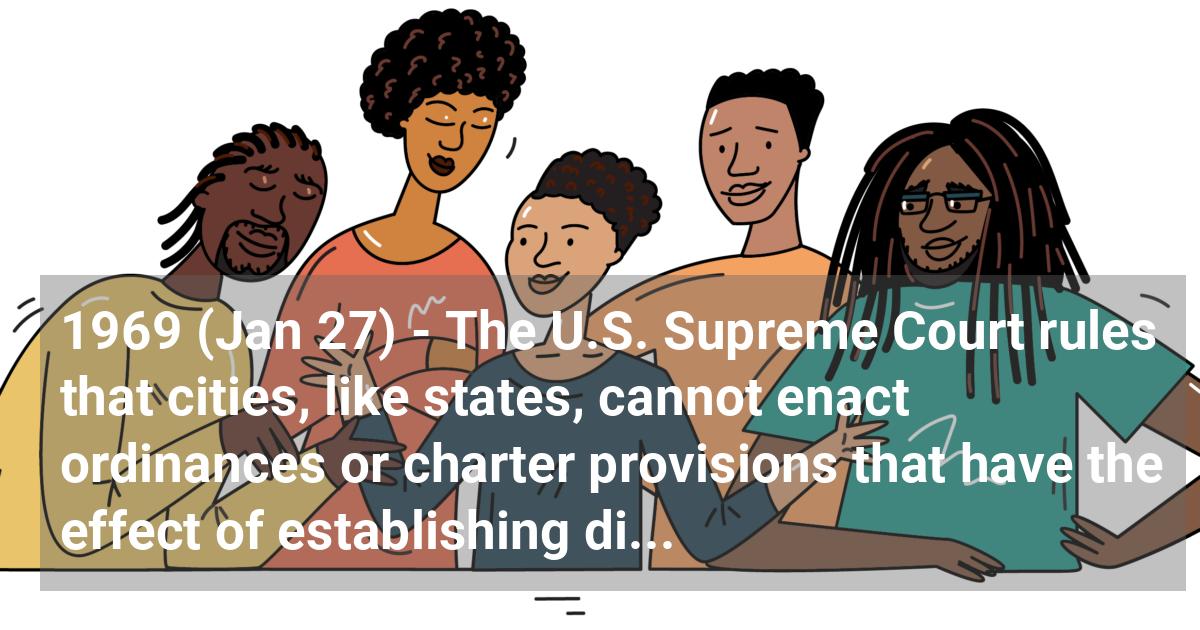Home / Full timeline / The U.S. Supreme Court rules that cities, like states, cannot enact ordinances or charter provisions that have the effect of establishing discrimination in housing.
 The U.S. Supreme Court rules that cities, like states, cannot enact ordinances or charter provisions that have the effect of establishing discrimination in housing.
The U.S. Supreme Court rules that cities, like states, cannot enact ordinances or charter provisions that have the effect of establishing discrimination in housing.
1969 (Jan 27)
The U.S. Supreme Court rules that cities, like states, cannot enact ordinances or charter provisions that have the effect of establishing discrimination in housing. The Court's decision involved a case filed by Nellie Hunter, a Black housewife from Akron, Ohio. In 1965, Hunter had attempted to buy a home on Akron's all-white west side but was turned down by a real estate company because of her race. Hunter filed a complaint with Akron City Hall, requesting the protection of a 1964 ordinance that banned racial discrimination in housing. But city officials claimed that local real estate interests had successfully waged a drive to amend the charter. The amended charter now required a vote by the people in establishing fair-housing measures. But the U.S. Supreme Court held that the Akron charter amendment "is no more permissible than denying racial minorities the vote on an equal basis with others." The city had unconstitutionally placed, the Court said, a "special burden" on its Black residents by requiring that bans against housing discrimination be approved by the majority of the city's voters.
References:
- • Hornsby, Alton. Chronology of African-American History: Significant Events and People from 1619 to the Present. Detroit: Gale Research, 1995.
